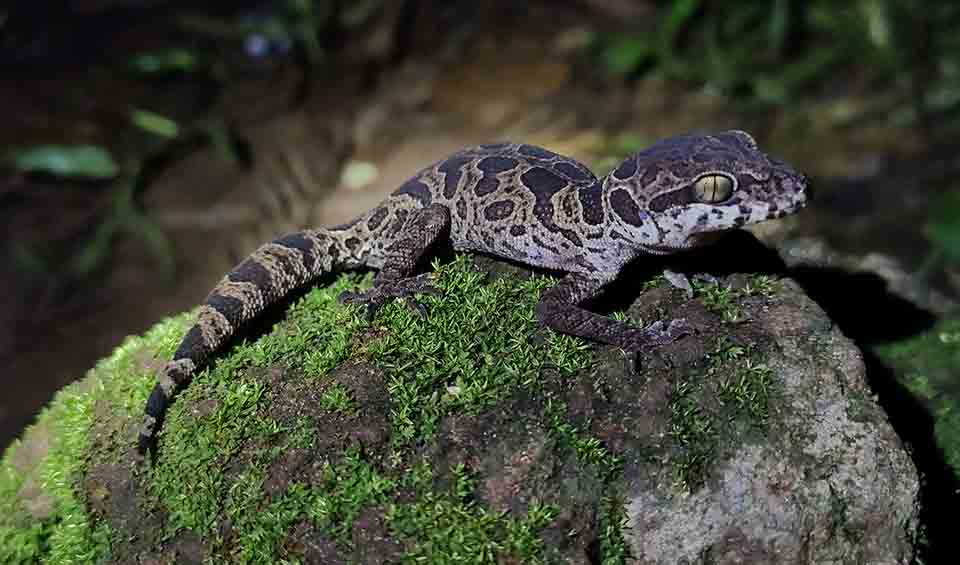Cyrtodactylus – Bent-toed geckos
Known for their ability to make quick, darting movements when startled
These geckos are found primarily in Southeast Asia, with species inhabiting countries like Thailand, Vietnam, Malaysia, and Indonesia. The name Cyrtodactylus comes from the Greek words “kyrtos” meaning “curved” and “dactylus” meaning “finger,” which refers to their unique, curved digits. These geckos are typically small to medium-sized, with slender bodies and long tails, and they have relatively soft, smooth skin.
One of the most notable features of Cyrtodactylus geckos is their ability to adapt to a wide range of habitats, from forests and caves to rocky hillsides and urban areas. They are primarily arboreal or terrestrial, depending on the species, and are well-adapted to climbing and hiding in crevices. Their feet are specially designed for gripping surfaces, with large, adhesive toe pads that allow them to scale vertical surfaces with ease. This adaptation helps them escape predators and find food, which typically consists of insects and small invertebrates. Some species are nocturnal, hunting for food at night, while others are more active during the day.
A key characteristic of Cyrtodactylus geckos is their behavior. These geckos are often shy and secretive, seeking shelter in cracks, under rocks, or inside tree bark during the day. They are not as commonly seen as other gecko species, partly due to their camouflaged coloration, which helps them blend into their natural surroundings.
The reproduction of Cyrtodactylus geckos is relatively typical for geckos, with most species laying eggs. The eggs are usually deposited in hidden locations, such as under rocks or inside tree bark, where the eggs remain safe until they hatch. Depending on the species, the eggs may take several weeks or months to hatch. The young geckos are independent from birth, immediately beginning to forage for food and hide from potential threats.
Species in this genus
Jeypore ground gecko
Its brown and tan patterns help it stay hidden among the forest floor’s leaf litter, rocks, and soil


